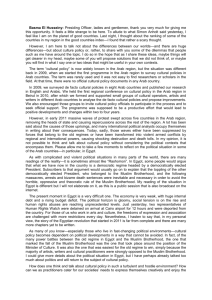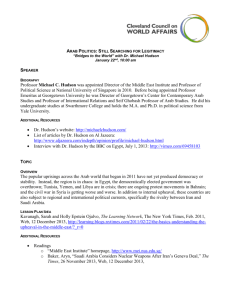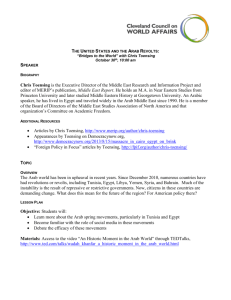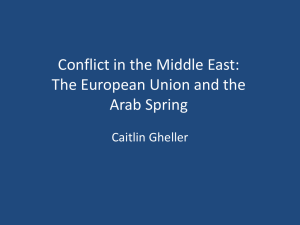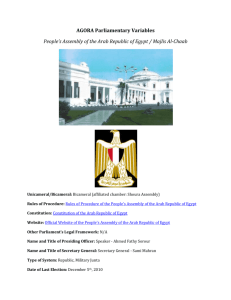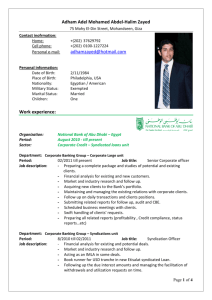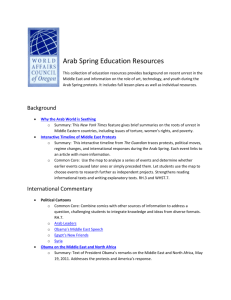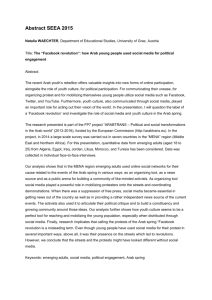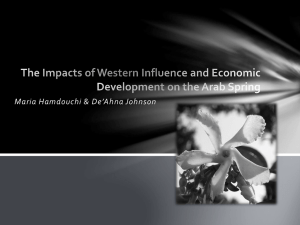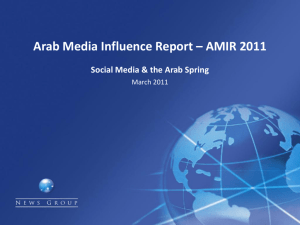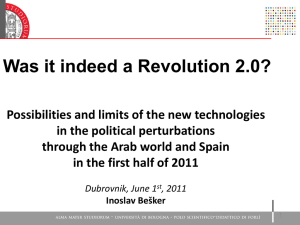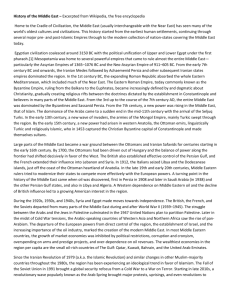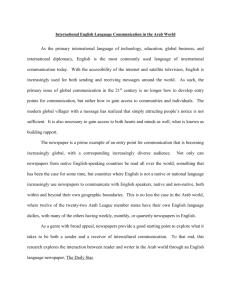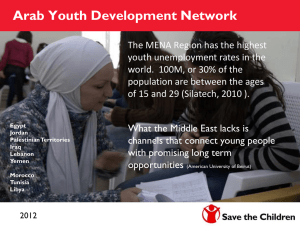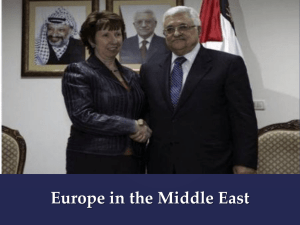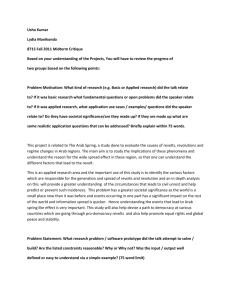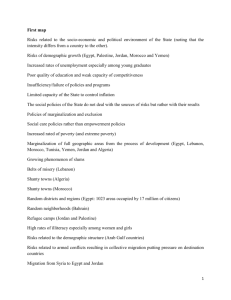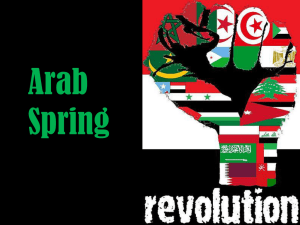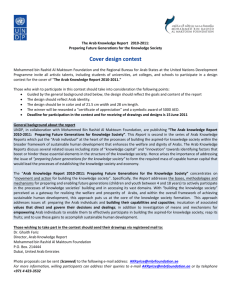The Egyptian Uprising: Causes, Implications and Communication
advertisement
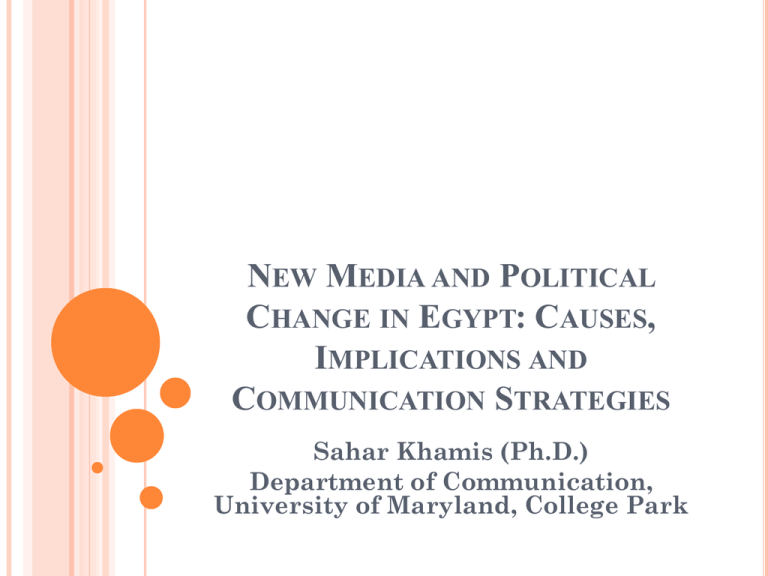
NEW MEDIA AND POLITICAL CHANGE IN EGYPT: CAUSES, IMPLICATIONS AND COMMUNICATION STRATEGIES Sahar Khamis (Ph.D.) Department of Communication, University of Maryland, College Park THE CAUSES OF THE EGYPTIAN REVOLUTION: Thirty years of dictatorship and autocratic rule Corruption The emergency law The faulty constitution Economic distress: 40% of Egyptians living under the international poverty line Growing calls for constitutional, economic, political and social reform Forging the latest parliamentary elections The successful popular revolution in Tunisia THE IMPLICATIONS FOR EGYPT: Charged the Egyptian people with a new sense of positivity, empowerment, determination, national pride, and solidarity. A peaceful, youthful grassroots revolution that was “across the board” involving different political, religious, and social groups A unique “leaderless revolution” Unity between Muslims and Coptic Christians The significant role of women A new era of social and democratic reform: “Egypt will not go back to where it was before Jan. 25th” THE IMPLICATIONS FOR THE ARAB WORLD: The domino effect or the ripple effect: Echoes of both the Tunisian and the Egyptian revolutions in Libya, Yemen, Bahrain, Jordan and Syria Arab rulers started to take some steps in the direction of political reform Arab governments can not ignore the power of the Arab street or the power of public opinion in their own countries A new era of political change, empowerment and awakening already started in the Arab world THE INTERNATIONAL IMPLICATIONS: Revisiting the U.S. foreign policy: Forging alliances with corrupt dictators, who suppress their people under the claim of preserving stability, is not an effective strategy Under suppression and repression there is no true stability: There is only a “boiling pot with a lid ready to pop off any minute” Not buying into the “Islamic scare” strategy, which legitimizes oppression as a means to curb Islamic influence: Playing on “Islamophobia” Peace and security can be achieved through fair and equitable relations between neighbors, not through strong armies and superior weapons THE CHANGING ARAB MEDIA LANDSCAPE: Arab media before 1990: Monolithic, uniform, strong government control and ownership: No diversity, plurality or freedom Arab media after 1990: The introduction of new media, such as satellite television channels and the Internet: New avenues for spreading information and fueling opposition Paradox: These alternative new media channels and avenues didn’t lead to a transition to political mobilization or democratization until 2011 The “safety valve” explanation for the media role THE GOVERNMENT’S COMMUNICATION STRATEGIES: Combining the suppression of protestors on the streets with the suppression of the truth through national, state-controlled media Cracking down on foreign journalists Closing down the office of Al Jazeera in Cairo and detaining some of its staff members Cutting off the cell phone lines for a few days Blocking off the Internet for a whole week: Pushing down the “kill switch” Using the mentality of the 50s and the 60s Failed and incompetent political and communication strategies THE PEOPLE’S COMMUNICATION STRATEGIES: Deploying new social media: posting and chatting on Facebook, tweeting, blogging and texting Facebook became the “people’s book”: The “Facebook Revolution” Creating the missing link between mediated selfexpression and street mobilization, i.e., between the “virtual world” and the “real world” Finding alternative, creative ways to access and spread information: The “Speak to tweet” service and using “hot bird” instead of “Nile Sat” to watch Al Jazeera THE MULTIPLE ROLES OF NEW MEDIA: Catalysts that paved the way for a democratic transition Platforms for self-expression Channels for communication and organization Bridge-builders between the young activists and their followers, between the “virtual world” and the “real world” Avenues for civic engagement and popular participation: From “safety valves” to “mobilization tools” Arenas for a new form of citizen journalism A LAST WORD…EGYPT “AFTER MUBARAK”: There is no turning back: The road to democratization and reform has already started and will continue The transition to democratization needs to be done “swiftly but safely” New era of civic engagement and popular participation Greater role for youth leadership Greater role for women’s participation Greater role for new media as “mobilization tools” Enhancing Egypt’s leadership in the Arab world Enhancing Egypt’s international image & reputation


